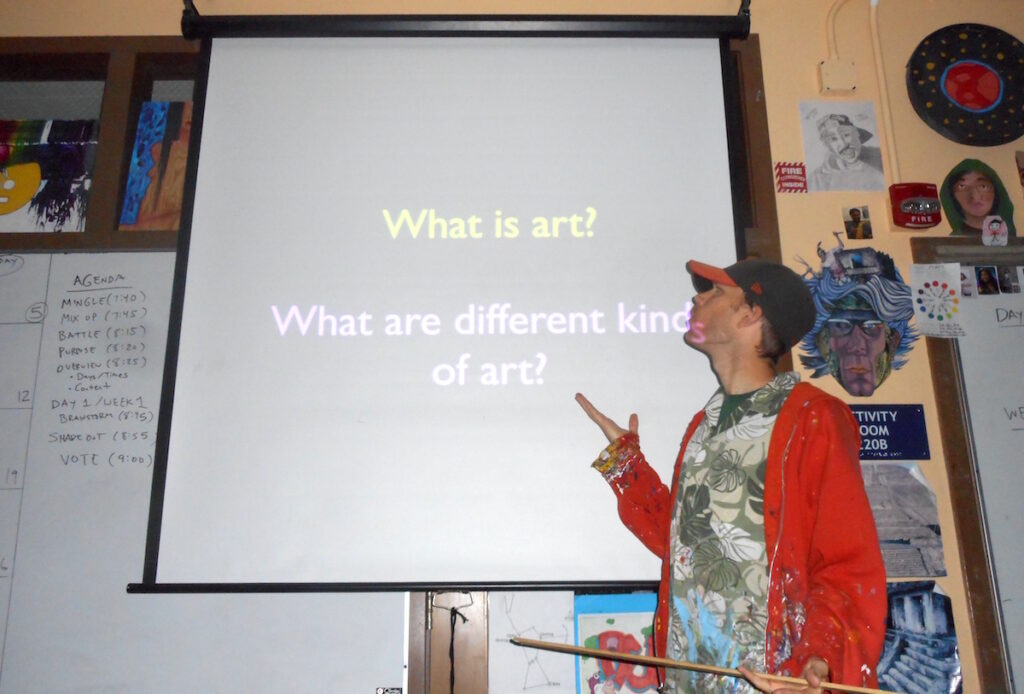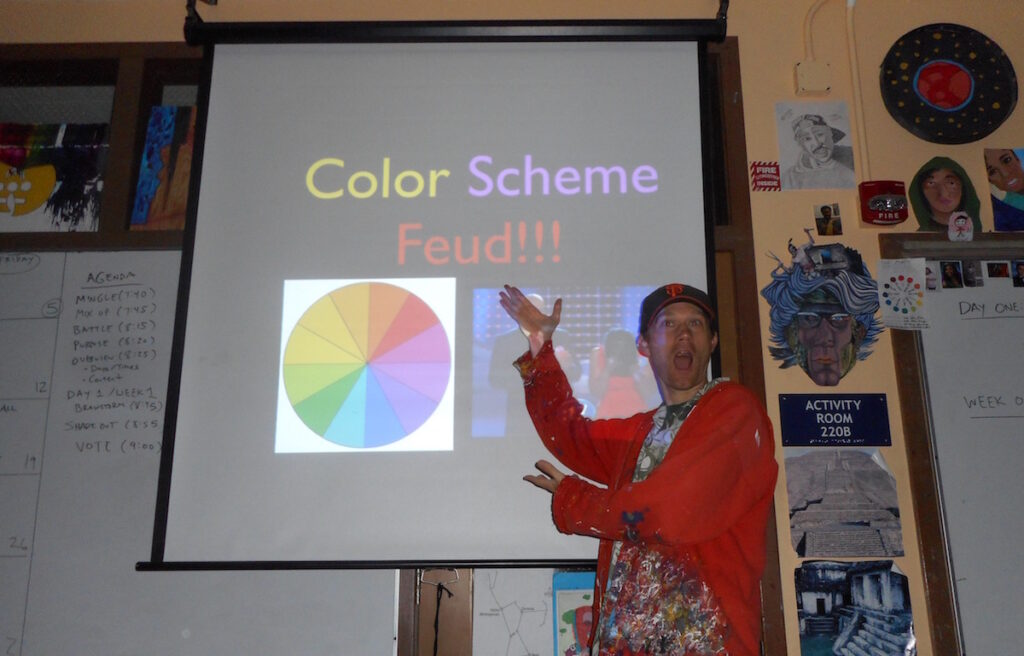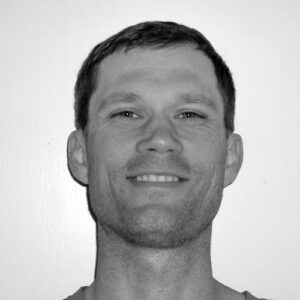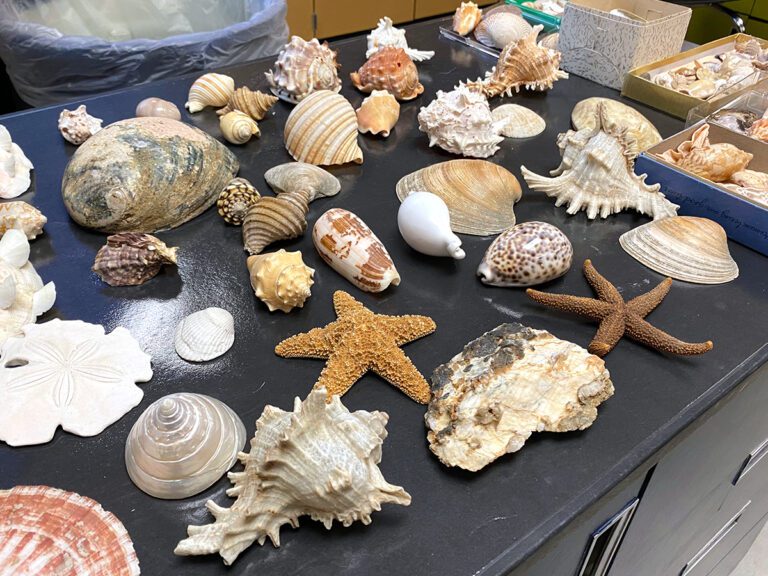Most art teachers primarily use projectors to introduce lessons or show famous artwork. However, there are many other ways you can use a humble slideshow to elevate learning and engagement in the art room.
Here are 6 unique ideas to consider.

1. Show Students Your Own Artwork and Process
Students love to see their teachers’ artwork. Although it can be intimidating to put yourself out there, remember students are less interested in judging your work and more interested in connecting with you on a deeper level. We ask our students to dig into their very beings to create work that is sincerely personal. When students see their art teacher is also willing to be vulnerable, new levels of trust, risk, and relationships can develop.
Showing images of our own processes can also be quite useful. Do you have images of your less successful work? Do you have images of sketches or doodles that led to new ideas? Showing the range of our own work and processes, from sketches to finished pieces, can benefit the studio environment.

2. Show Class Growth
When we have critiques, all student work is on display at once. It can be quite powerful to document that display with a camera and show it to students as they progress throughout the year. Before their second critique, when all the student work is up on display, use the projector to show students their previous critique. Ask them to notice areas they feel they have improved on as a group. Ask them if there are areas they can still improve in upcoming units. When students can visualize their growth as both individuals and a collective studio of artists, it can transform the dynamic of the art room.
3. Create Games to Teach Concepts
One way to get students to dive into new content is through games. Games can instantly happen by simply creating a slideshow.
Here are 3 games I use the projector for in my room:
- Juxtaposition Jeopardy: Show students various juxtaposed images and have table teams come up with the underlying message.
- Color Scheme Feud: Ask students to identify which color scheme is being used in a particular image.
- Symbolic Pictionary: Project words and ask students to draw symbols to represent them. Alternately, you could project an idea like “public transportation,” ask students to brainstorm words describing their experience with it, then draw symbols based on the characteristics they listed. This version of the game asks students to dig deeper into the idea of visual metaphor. For both versions, personal whiteboards and dry-erase markers are an engaging material to use.

4. Analyze Rubrics and Assignment Requirements
When discussing rubrics and requirements, it is useful to project the rubric while students read along. Often, students get lost from one category to the next. When the rubric is projected, you can point out where the class is at any time. You are able to circulate throughout the room and can reference the rubric from anywhere. Rubric assessment is not always very exciting, but projecting it can aid in discussion and focus.
5. Share Current Events
As artists, we generate ideas and inspiration from everything. Events in the community, nation, or planet, whether current or historical, can get students thinking and feeling. Incorporating daily or weekly images about some sort of event can trigger new direction or help develop dialogue within your classroom. One great site to spark discussion visually is NBC News’ Week In Pictures. Regardless of where the class is in a particular assignment, taking a few minutes to think critically or analyze a situation will help develop their artistic side as well.
6. Share Things in a Visual Way to Promote Discussion
Closely related to current events, the projector is a tool to focus student attention. As educators, we are not limited to the realm of the arts to engage students in thought and discussion. Is there a school-wide issue that needs to be addressed? Use the projector to enhance the discussion. Is there a constant problem with cleaning or material use in your art room? Take some photos, project some images, and make the students really see the issue.
Our words alone are not enough. Visual images go so much farther to help convey and retain information. Using our projectors to show images, create slideshow games, or to simply enhance directions will help elevate the art room.
What are some ways you use the projector and slideshows in your art room?
What are some questions that come up after reading this article?
Magazine articles and podcasts are opinions of professional education contributors and do not necessarily represent the position of the Art of Education University (AOEU) or its academic offerings. Contributors use terms in the way they are most often talked about in the scope of their educational experiences.





